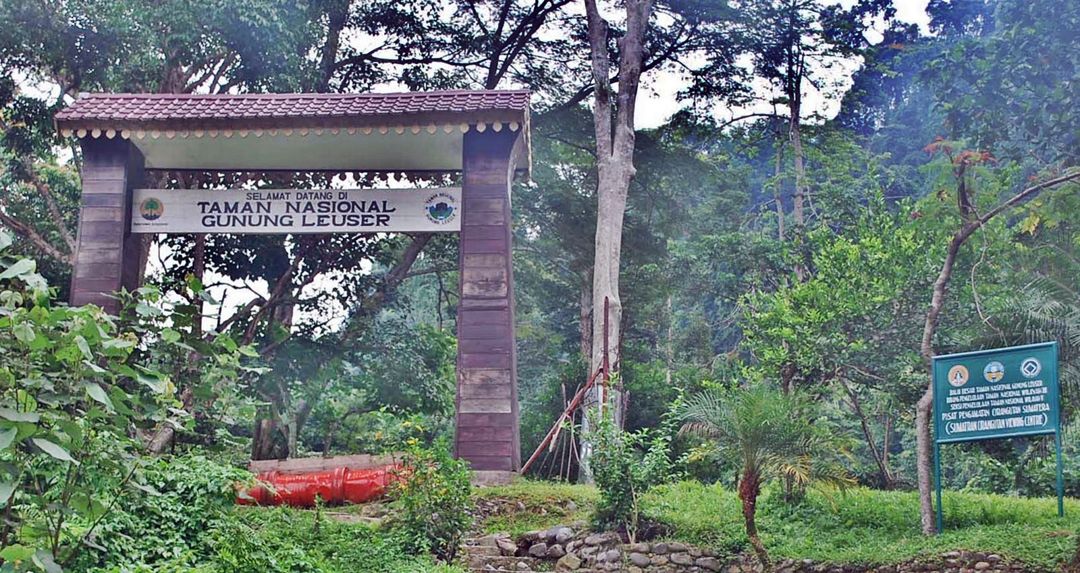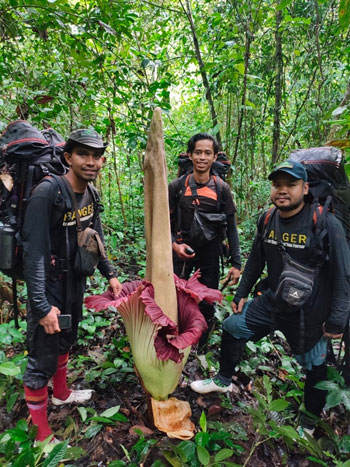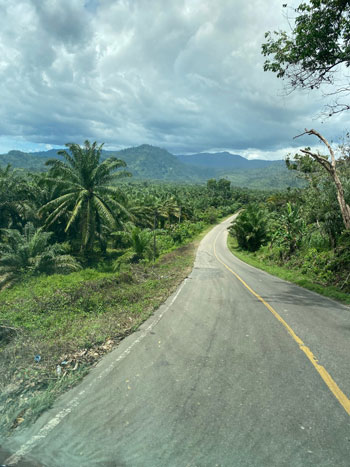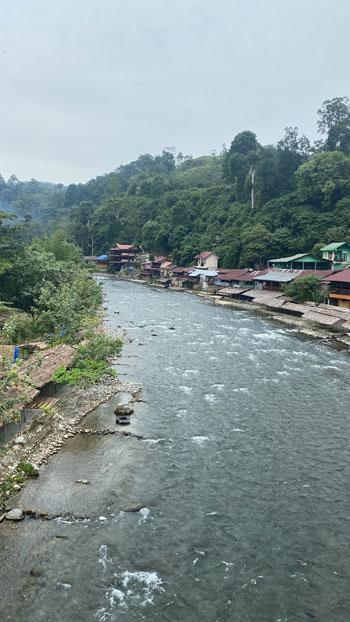
Leuser Ecosystem

Indonesia lies second only to Brazil in its amount of tropical forest cover. The Leuser Ecosystem, that encompasses the Gunung Leuser National Park, covers 2.6 million hectares of tropical rainforest across Northern Sumatra and Aceh. However, less than half of it is protected by law. In 2011 the area was placed on a list of most endangered world heritage sites. The Gunung Leuser National Park is just one of ten protected areas on the island of Sumatra, accounting for a massive 1,094,692 ha. The United Nations and the World Conservation Union (IUCN) recognise it as one of the world’s most irreplaceable protected areas for conservation and biodiversity. It is the last place on earth where tigers, orangutans, elephants and rhinos live together.

The tallest flower in the world - Titan arum.
Sumatra has 210 species of mammal, the most of any Indonesian island. 16 species are endemic and 17 are endemic to the Mentawi islands to the west of the island. Sumatra also has around 10,000 plant species, many of which are endemic, such as the world’s largest flower, Raffelesia (Rafflesia arnoldii) and the world’s tallest flower, the Titan lily (Titan arum). Around 582 species of bird are also resident in Sumatra. BirdLife International recognises 34 important bird areas, 54% of which are outside protected areas and 18% in critically threatened lowland forest.

Signs bordering the National Park
Today the forest and its inhabitants remain fiercely under threat from poaching and habitat loss due to oil palm plantations and growing national infrastructure. In the past 20 years, it is thought that over 12 million hectares of Leuser has been lost. Orangutans, tigers, elephants and rhinos are all critically endangered, meaning they are at imminent risk of extinction.
The impacts of forest loss are clear. More human-wildlife conflict with local villagers, more natural disasters and declining health of the general population. Your visit to Sumatra is hugely important because it helps to show local communities – and the government that the forest and its inhabitants are important and worth protecting.
Contact us today to book the trip of a lifetime. Come and see the stunning beauty of the jungle and its wildlife for yourself and help us to save it for future generations.
Bukit Lawang
Bukit Lawang is the best gateway to explore the Leuser Ecosystem and the National Park.

The road to South Aceh
Since the inception of the Bohorok Rehabilitation centre in 1972 by Swiss zoologist Monica Borner and Regina Frey, Bukit Lawang has been a focus for orangutan conservation. However, with the official closure of the centre in 2000, ex-captive orangutans have been under the care of the Sumatran Orangutan Conservation Programme (SOCP), led by the UK’s Dr. Ian Singleton and funded primarily by Regina Frey’s Swiss-based organisation the Pan Eco Foundation.
Today, Bukit Lawang is officially an ‘orangutan viewing area’ and as such visitors from around the globe come to get a close-up view of Asia’s only great ape. The village itself stretches alongside the Bohorok river, once slow, deep and meandering but since the devastating flash flood in the village in 2003, the river is now much shallower and faster flowing, making for adventurous rafting runs downriver.

The Bohorok river in Bukit Lawang.
Unfortunately, since the closure of the rehabilitation station, orangutan tourism in the area has been unsustainably managed by local guides, becoming intrusive on the animals in the main trail area. Our entire ethos is to do things differently.
Our company is co-directed by Wanda, a highly experienced guide and novice forest expert, who was born and raised in Bukit Lawang. He has been guiding for over 30 years and Dr. Andrea Permana, an expert in orangutan behavioural ecology. Together we aim to deliver a truly responsible, ethical experience, which is lacking in many local ‘eco-tourism’ companies in the area. Our aim is to educate and raise awareness and so we work closely with local people, National Park staff and the Forestry Police to ensure the tours we offer only have a positive impact on the forest and the local communities.
Alongside the orangutans around Bukit Lawang, the surrounding forests are also home to Sumatran rhinos, Sumatran tigers, Asian elephants, Sumatran serow, leopard cats and sambar deer, although many of these species are more likely to be met on longer treks into the forest interiors away from the main tourist trails. Much more common on our shorter treks are sightings of siamangs, white-handed gibbons, Thomas leaf monkeys, long-tailed macaques, Southern pig-tailed macaques, Asian pied hornbill and Argus pheasants, as well as a variety of insects, reptiles and birds, such as brown fulvetta, Asian glossy starling, yellow billed warbler and yellow-bellied bulbul.